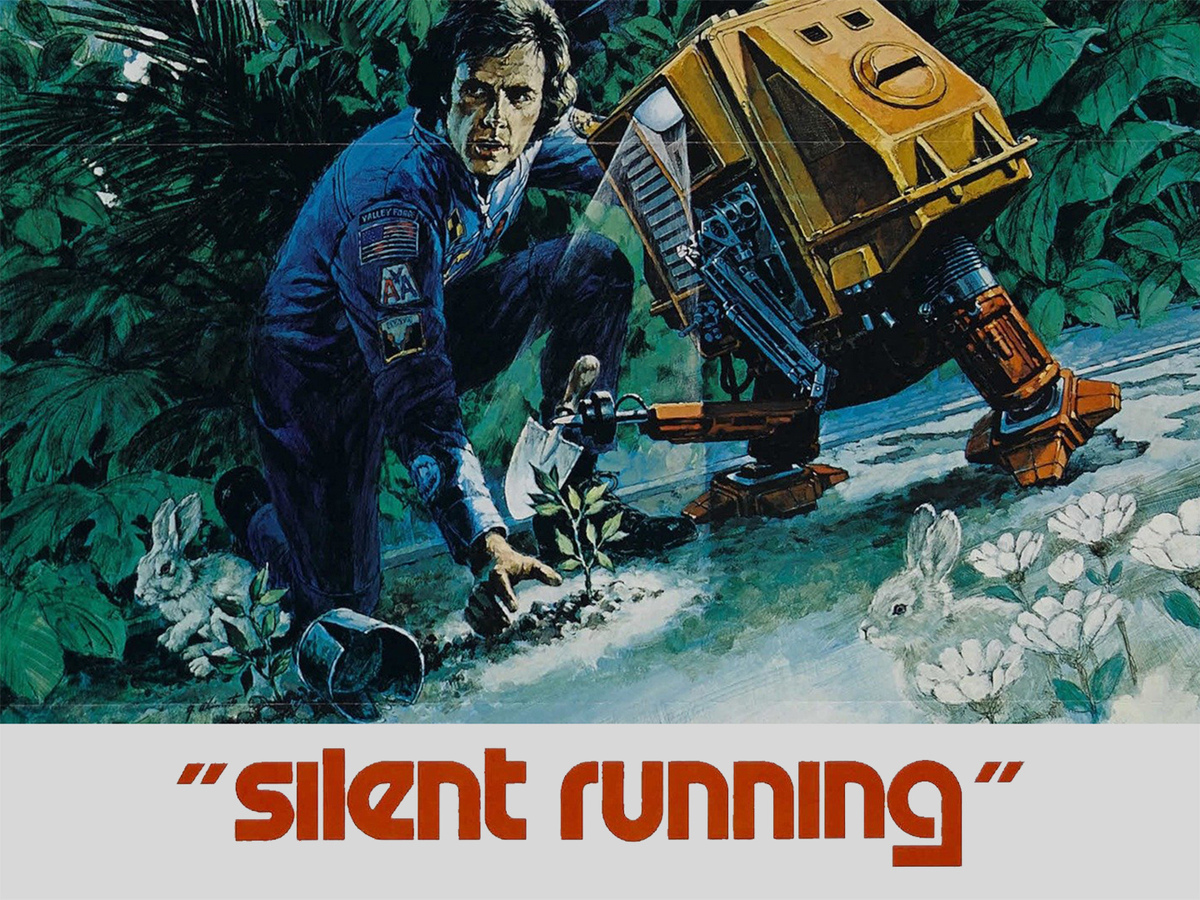
Silent Running is a cult classic science fiction film that has captivated audiences for decades. Released in 1972, this thought-provoking movie takes viewers on a captivating journey through space as it explores themes of environmentalism, isolation, and the preservation of nature. Directed by Douglas Trumbull, Silent Running stars Bruce Dern as Freeman Lowell, a botanist on an Earth spaceship carrying the last remaining forests and plants. As the story unfolds, Lowell finds himself at odds with the ship’s crew, making a bold decision to protect the delicate ecosystem he holds dear. In this article, we are going to dive into 50 fascinating facts about Silent Running, shedding light on its production, impact, and enduring legacy. So, fasten your seatbelts and prepare to embark on a thrilling adventure into the world of Silent Running!
Key Takeaways:
- Silent Running, released in 1972, was a pioneering sci-fi film that addressed environmental concerns ahead of its time, inspiring a dedicated fan base and influencing future works.
- The movie’s themes of environmental responsibility, isolation, and sacrifice continue to resonate with audiences, showcasing the enduring impact of Silent Running in the sci-fi genre.
Silent Running was released in 1972.
Silent Running, directed by Douglas Trumbull, made its debut in 1972, captivating audiences with its unique blend of science fiction and environmental themes.
The film was a critical success, but a commercial disappointment.
Despite receiving positive reviews, Silent Running struggled to find a wide audience and was not a box office hit.
The movie stars Bruce Dern as Freeman Lowell.
Bruce Dern delivered a powerful performance as Freeman Lowell, a botanist charged with preserving the last remaining plant life in space.
It takes place in a future where all plant life on Earth has become extinct.
The film presents a devastating vision of the future where Earth’s ecosystems have been destroyed, leaving only a few preserved specimens aboard spaceships.
The film was ahead of its time in addressing environmental concerns.
Silent Running tackled the issues of environmental conservation and the importance of preserving nature long before it became a mainstream topic.
The movie was inspired by a short story by Sterling E. Lanier.
The concept for Silent Running was based on the short story “Silent Running” by Sterling E. Lanier, which was published in 1963.
Douglas Trumbull was a visual effects pioneer.
Douglas Trumbull, who directed Silent Running, was known for his groundbreaking work in visual effects, having previously worked on films like 2001: A Space Odyssey.
The film’s soundtrack was composed by Peter Schickele.
Peter Schickele, known for his work in classical music and his comedic alter ego P.D.Q. Bach, composed the haunting and atmospheric score for Silent Running.
The robots in the film were nicknamed Huey, Dewey, and Louie.
The endearing and unique robots that assist Freeman Lowell in his mission to preserve the plants were affectionately named after the Disney ducks.
Silent Running was shot on a limited budget.
Due to budget constraints, the film was primarily shot on existing sets and reused spaceships from other productions.
The film’s themes resonate with contemporary environmental issues.
The film’s message about the importance of preserving nature and our responsibility to the environment remains relevant to this day.
Silent Running has gained a cult following over the years.
While it may not have been a commercial success initially, the film has since garnered a dedicated fan base who appreciate its thought-provoking themes.
The movie’s production design was ahead of its time.
The visually stunning spaceships and futuristic environments created for Silent Running showcased the talent and creativity of the production team.
The film included real plant specimens in the set design.
To enhance the authenticity of the film’s depiction of endangered plant life, real specimens were incorporated into the set design.
Silent Running has been praised for its cinematography.
The film’s cinematography, with its striking visuals and use of natural lighting, has been lauded by critics and cinephiles alike.
The movie addresses the ethical implications of preservation.
Silent Running raises thought-provoking questions about the ethics of preserving life at any cost and the sacrifices one must make for the greater good.
The film’s message resonates with audiences of all ages.
Silent Running’s timeless themes of environmental responsibility and the intrinsic value of nature continue to resonate with viewers of all generations.
Silent Running was filmed in California.
The majority of the film was shot on location in California, utilizing its diverse landscapes to create the illusion of a future Earth.
The movie’s special effects were impressive for its time.
With limited resources, the special effects team managed to create convincing space sequences and visually stunning imagery.
Silent Running offers a unique blend of genres.
The film combines elements of science fiction, drama, and environmental advocacy to create a captivating and thought-provoking cinematic experience.
The film’s title refers to the silent running mode of the spaceships.
In the film, the spaceships operate in “silent running” mode to avoid detection and protect the remaining plant life.
Silent Running explores the psychological toll of isolation.
The film delves into the emotional journey of Freeman Lowell as he grapples with loneliness and the weight of his mission in deep space.
The movie showcases a powerful performance by Bruce Dern.
Bruce Dern’s portrayal of Freeman Lowell is widely regarded as one of his most compelling and nuanced performances.
Silent Running has been studied in film schools.
The film’s thematic depth and innovative visual storytelling have made it a subject of analysis in film schools around the world.
The movie’s set design has inspired other sci-fi films.
The unique aesthetic and design of the spaceships in Silent Running have influenced subsequent science fiction films and TV shows.
Silent Running was ahead of its time in addressing animal rights.
Alongside its environmental themes, the movie also explores the rights and treatment of animals in a futuristic society.
The film’s soundtrack is haunting and atmospheric.
The score composed by Peter Schickele enhances the emotional impact of the film and creates a sense of unease.
Silent Running serves as a cautionary tale.
The film’s dystopian future serves as a warning of the potential consequences of neglecting our environment.
The movie reflects the countercultural movement of the 1970s.
Silent Running’s themes of rebellion and challenging societal norms are reflective of the countercultural movements of the era.
The film’s visuals are still visually striking today.
Despite being released almost five decades ago, the film’s visual effects hold up remarkably well, testifying to their enduring quality.
Silent Running was praised for its ecological message.
The film’s call for taking responsibility for the environment and preserving nature struck a chord with audiences and critics alike.
The film’s small cast adds to its intimate atmosphere.
The focus on a limited number of characters enhances the sense of isolation and intimacy in the film.
Silent Running was a departure from traditional Hollywood blockbusters.
The film’s introspective and thought-provoking nature set it apart from the big-budget spectacles of the time.
The movie’s set pieces were created using innovative techniques.
The production team used a combination of practical effects, miniatures, and models to bring the film’s space sequences to life.
Silent Running was an early example of eco-cinema.
The film’s exploration of ecological themes paved the way for the emergence of a subgenre known as eco-cinema.
The film was not initially well-received by audiences.
Upon its release, Silent Running faced mixed reactions from audiences who were perhaps unprepared for its introspective narrative.
The movie’s themes align with the growing environmental movement in the 1970s.
Silent Running resonated with the environmental activism of the time, capturing the spirit of a generation concerned about ecological issues.
The film’s ending is open to interpretation.
The ambiguous ending of Silent Running allows viewers to ponder the fate of Freeman Lowell and the future of humanity.
The film’s production faced challenges due to its modest budget.
Despite the limitations, the creative team managed to overcome budget constraints and deliver a visually stunning film.
Silent Running features strong thematic parallels with other sci-fi classics.
The film’s themes of isolation, environmental catastrophe, and the search for meaning can be found in other seminal science fiction works.
Silent Running has been rediscovered and reassessed over time.
The film’s reputation has grown over the years, with many now recognizing its importance in the sci-fi genre.
The movie’s depiction of space travel is grounded in realism.
Unlike some science fiction films of the time, Silent Running took a more realistic approach to space travel and technology.
The film’s messages about humanity’s interdependence with nature are still relevant today.
Silent Running serves as a reminder of the interconnectedness between humans and the environment, a message that holds true in the present day.
The film’s visual effects team included future industry veterans.
The talented individuals who worked on the film’s visual effects went on to have successful careers in the industry.
Silent Running explores the concept of sacrifice.
Freeman Lowell’s journey raises profound questions about the sacrifices we are willing to make for the survival of our planet.
The movie created lasting images that have become iconic.
The visually striking images of domed forests floating in space have become emblematic of Silent Running.
Silent Running has been analyzed for its political undertones.
The film’s portrayal of a dystopian society has led to discussions about its political and social commentary.
The film’s use of silence adds to its atmospheric quality.
The moments of silence in the film contribute to its sense of subtlety and tension, emphasizing the solitude of space.
The movie’s message is one of hope.
Amidst the bleakness of its futuristic setting, Silent Running ultimately offers a message of hope and the potential for redemption.
The legacy of Silent Running lives on in the sci-fi genre.
The film’s influence can be seen in subsequent science fiction works that tackle environmental themes and explore the human condition.
Conclusion
Silent Running is a renowned sci-fi movie that continues to captivate audiences with its thought-provoking storyline and stunning visuals. The film, directed by Douglas Trumbull, delves into themes of environmentalism, isolation, and humanity’s relationship with nature. It showcases the outstanding performance by Bruce Dern as the protagonist, Freeman Lowell, an astronaut determined to save the last remaining plant life in the universe.
Through this gripping story, Silent Running challenges viewers to reflect on the consequences of our actions and the importance of preserving our planet’s natural resources. Trumbull’s direction, combined with Peter Schickele’s haunting score, creates a compelling atmosphere that immerses the audience in a dystopian future. Silent Running remains a classic of its genre, reminding us of the fragility of our ecosystem and the need for responsible stewardship of our environment.
FAQs
1. When was Silent Running released?
Silent Running was released on March 10, 1972.
2. Who directed Silent Running?
Silent Running was directed by Douglas Trumbull.
3. Who stars in Silent Running?
Bruce Dern stars as Freeman Lowell, the main protagonist of the film.
4. What is the main theme of Silent Running?
The main theme of Silent Running revolves around environmentalism and the preservation of nature.
5. What is the significance of Silent Running in the sci-fi genre?
Silent Running is considered a landmark film in the sci-fi genre due to its profound exploration of ecological themes and its influence on subsequent movies.
6. Where was Silent Running filmed?
The majority of Silent Running was filmed at various locations in California, including the Valley Forge spaceship sequences shot at the Los Angeles International Airport.
7. Did Silent Running receive any awards or nominations?
Silent Running received a nomination for Best Original Screenplay at the 1972 Hugo Awards.
8. What is the rating of Silent Running?
Silent Running has a rating of 6.7/10 on IMDb.
9. Is Silent Running available on streaming platforms?
Yes, Silent Running is available for streaming on various platforms, including Amazon Prime Video and YouTube.
10. How does Silent Running address the issue of environmentalism?
Silent Running depicts a future where plant life is on the verge of extinction, highlighting the importance of environmental awareness and the consequences of neglecting the natural world.
If you enjoyed learning about Silent Running, why not explore more fascinating films and topics? Dive into the haunting world of "The City of Lost Children," a dystopian masterpiece that will leave you pondering the nature of humanity. For those intrigued by Silent Running's robots, our article on mind-blowing robotics facts is sure to satisfy your curiosity. And if you can't get enough of Silent Running's star, check out our piece on Bruce Dern, a talented actor with a career spanning decades.
Was this page helpful?
Our commitment to delivering trustworthy and engaging content is at the heart of what we do. Each fact on our site is contributed by real users like you, bringing a wealth of diverse insights and information. To ensure the highest standards of accuracy and reliability, our dedicated editors meticulously review each submission. This process guarantees that the facts we share are not only fascinating but also credible. Trust in our commitment to quality and authenticity as you explore and learn with us.


